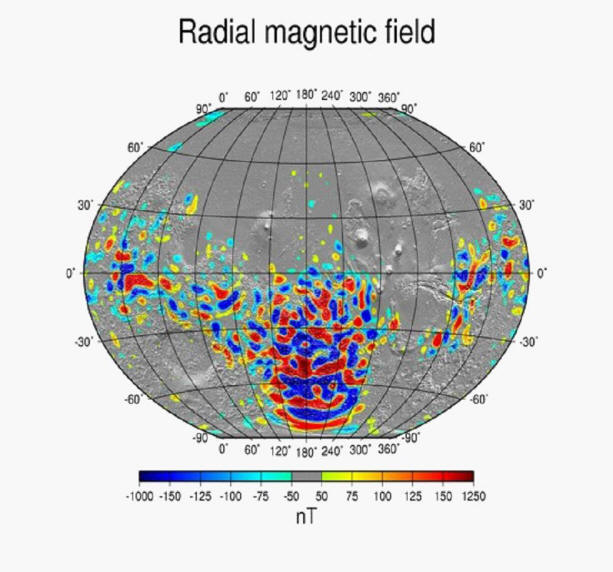|
|
Planetary Paradigms
Nov
18, 2009
A new mission designed to study
the Sun's electrical relationship
with Mars will soon be launched.
Sometime in the morning on a day
between November 18 and December 7,
2013, NASA will launch the Mars
Atmosphere and Volatile Evolution
Mission. Otherwise known as
MAVEN, the project will
investigate the upper atmosphere of
Mars, the ionosphere, and the
dynamics of solar wind interactions.
Onboard the spacecraft will be
several instruments to monitor
various phenomena that could provide
valuable information to Electric
Universe investigators:
* Solar Wind Electron Analyzer to
measure ionospheric electrons.
* Solar Wind Ion Analyzer to measure
the magnetosheath ion density.
* Langmuir Probe to determine ion
escape wave heating and extreme
ultraviolet input from the Sun.
* Ultraviolet Spectrometer to
measure characteristics of the upper
atmosphere.
Although there are other sensors
included with the science package,
these four are primarily designed to
gather data about electrical
activity between Mars and the Sun.
MAVEN data will help to determine
what effect on the planet the loss
of carbon dioxide, nitrogen dioxide
and water vapor from its atmosphere
to space has had over the eons,
perhaps providing clues as to its
possible habitability in the past.
The equatorial diameter of Mars is
approximately 6793 kilometers, about
half that of Earth. Its average
temperature is minus 63 degrees
Celsius, compared to Earth at 13
degrees Celsius. The atmospheric
density on Mars is equivalent to
standing on top of a mountain six
times taller than Mount Everest.
Scientists speculate that four
billion years ago, Mars lost most of
its atmosphere. How is not known,
but several theories have been put
forward. An asteroid impact might
have exploded with such force that
it blew the atmosphere away. A
torrent of charged particles blazing
out from the Sun could have eaten
away the atmosphere over millions of
years, leaving Mars as it is today.
It is believed that Mars is covered
with a global layer of permafrost
because the annual mean temperature
of the soil is so low. It is far
colder in the northern and southern
latitudes: so cold that carbon
dioxide gas freezes into a solid,
covering the landscape with dry ice.
The atmosphere is so thin that
water-ice will sublime directly into
vapor. Therefore, say planetary
scientists, any water left over from
the more temperate period in the
history of Mars "must be" bound up
with thick icy soils, or locked in
frigid underground vaults.
MAVEN is scheduled to remain in Mars
orbit for about one year. At the low
point in its elliptical orbit, it
will be just 125 kilometers above
the planet. At its high point, it
will be more than 6000 kilometers
out, therefore the mission team
hopes to sample the atmosphere more
thoroughly than in the past. Why
does so much carbon dioxide remain
when most of the other gases are
gone?
With the observations from MAVEN,
perhaps some other pertinent
questions will be answered. What is
the relationship to planetary
atmospheres and the behavior of an
electric sun? Can present conditions
on Mars provide examples of the
electrical connection? Do present
conditions on Mars offer analogues
that can help us find clues to the
catastrophic events in the planetís
recent past?
The history of the planets is
difficult to determine. As these
pages have attempted to point out
over the years, each of them took
part in several catastrophic events.
The most recent of those events left
its mark incised on planetary
bodies, as well as on the human
psyche. Mythology, art, and religion
can all be traced back to that time
of terror when the gods fought each
other in the sky.
Stephen Smith
|
|
|
|
|
|
SPECIAL NOTE - **New Volumes Available:
We are pleased to announce a new
e-book series
THE UNIVERSE ELECTRIC. Available now, the first volume
of this series, titled Big Bang, summarizes the failure of modern cosmology
and offers a new electrical perspective on the cosmos. At
over 200 pages, and
designed for broadest public appeal, it combines spectacular
full-color graphics with lean and readily understandable
text.
**Then second and third volumes in the series are now available,
respectively titled Sun and Comet, they offer
the reader easy to understand explanations of how and why these bodies
exist within an Electric Universe.
High school and college students--and teachers in
numerous fields--will love these books. So will a large
audience of general readers.
Visitors to the Thunderbolts.info site have often
wondered whether they could fully appreciate the Electric
Universe without further formal education. The answer is
given by these exquisitely designed books. Readers from
virtually all backgrounds and education levels will find them
easy to comprehend, from start to finish.
For the Thunderbolts Project, this series is a milestone.
Please see for yourself by checking out the new
Thunderbolts Project website, our leading edge in
reaching new markets globally.
Please visit our
Forum
|
|
|
|
|
|
|
|







